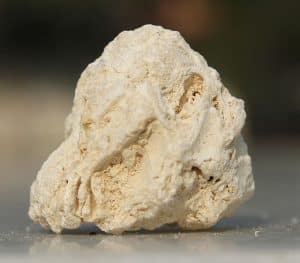 Contributed by Stephanie Evans, Staff Geologist, PPM Consultants
Contributed by Stephanie Evans, Staff Geologist, PPM Consultants
Beer is one of the oldest drinks known to humans, and its history can take us back to the dawn of civilization. The popular drink can be dated back to the last ice age around 10,000 BCE, and has since evolved into the beer we know and love today.
A mild beer might taste light, crisp, and refreshing, and is especially nice after working in the Alabama heat all day. A bolder beer might taste more hearty, robust, and powerful, like porters or ales. There are over 100 different beer styles in the world, but they all have something in common – water. In fact, beer is commonly composed of approximately 95% water. The chemistry and quality of water are therefore essential in brewing a good beer and are strongly influenced by geology, through which water percolates.
 Many breweries use wells or private springs as their water source. Natural water contains four essential elements for the brewing process: calcium, magnesium, sodium, and potassium. Proper calcium levels can drive the pH of the beer down, which is typically needed for light beers. Water from springs with a high magnesium concentration can give beer a bitter taste, which can be useful when brewing sour beers. Sodium, on the other hand, can accentuate the sweetness, and maltiness of the beer. Potassium, as well as sodium, can create a “salty” flavor effect.
Many breweries use wells or private springs as their water source. Natural water contains four essential elements for the brewing process: calcium, magnesium, sodium, and potassium. Proper calcium levels can drive the pH of the beer down, which is typically needed for light beers. Water from springs with a high magnesium concentration can give beer a bitter taste, which can be useful when brewing sour beers. Sodium, on the other hand, can accentuate the sweetness, and maltiness of the beer. Potassium, as well as sodium, can create a “salty” flavor effect.
The geology of the area strongly influences the concentration of these significant elements. For example, the Pilsen region of the western Czech Republic resulted in the development of the famously crisp, and lightly colored lager now famously known as a pilsner. Pilsen is in an area of metamorphic rocks that don’t produce the typical hard-water-making elements, which is why the Pilsner beer is so crisp due to the water having almost no sulfates and hardly any calcium.
 As a native Hoosier, I am very proud of our world-class limestone. We have some of the hardest water because of the abundant limestone in Indiana, and it shows in the beer you will find brewed in the area. High levels of calcium in the groundwater, which is derived from weathered limestone, are very useful for brewers in Indiana who aim to make high-gravity IPAs.
As a native Hoosier, I am very proud of our world-class limestone. We have some of the hardest water because of the abundant limestone in Indiana, and it shows in the beer you will find brewed in the area. High levels of calcium in the groundwater, which is derived from weathered limestone, are very useful for brewers in Indiana who aim to make high-gravity IPAs.
There is abundant proof that most geologists love beer. There is even a popular Facebook group with over 8,000 members called Geologists Drinking Beer. So why is the bond between geologists and beer so strong? Maybe it’s the correlation between beer and geology as described above. Although, a popular theory I have credited to the amount of time spent outside doing field work; when it’s hot and you’ve been hiking all day carrying 50 pounds of rocks, the reward of a refreshing beer after a day’s work can be sublime. A third theory offered – and my personal favorite – is that beer is simply part of the culture, something that has been handed down from professor to student for generations.

